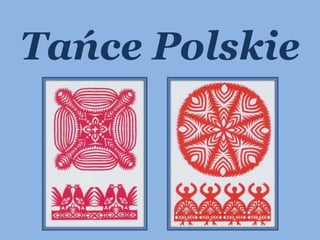
Discover the History and Traditions of Polish Mazur Dances
- 2. The mazur and mazurek (i.e. small mazur), or in English mazurka, are general terms for a series of Polish folk dances in triple meter, which originated in the plains of Mazovia around Warsaw. The people of the province were called Mazurs; thus, the dance mazur bears the same name as the male inhabitant of the region. The dances, known abroad as mazurkas, comprise more than one type: mazur or mazurek, the obertas or oberek, and the kujawiak from the neighboring district of Kujawy (see PMC entries on oberek and kujawiak). These dances are linked by common rhythmic and choreographic traits, especially the mazurka rhythm discussed below. The name is much younger than the dance itself, and probably originated outside of the region. This term appears for the first time in J. Riepel's music dictionary published in Germany in 1752.
- 3. here are a number of basic steps: bieg mazurowy (running step), sideways step, sliding step, and the hołubiec (clicking heels together, similar to the step in the krakowiak). There are also many hand positions, figures, and turns that could be used by couples performing this dance. A different set of group figures is available for ensembles. Thus, the dance leaves much room for the creativity of its choreographer and the spontaneity of individual dancers.
- 7. Rousing Mazur performed by Song and Dance Ensemble Warszawianka
- 15. Mazur is regarded as one of the two Polish national dances. Like the Polonaise, it was first danced by peasants in different regional versions. Eventually adopted by Polish noblemen, it had become a national dance. Mazur also became very popular in European courts under the French name of Mazurka. The rhythm of Mazur is well known from Mazurkas created by the famous Polish composer, Frederic Chopin. Mazur, by Polanie, is danced to music from the opera Straszny Dwor (the Haunted House), written in the 19th Century by Polish composer Stanislaw Moniuszko.
- 18. Mazur from the opera „Straszny Dwór” (The Haunted Manor); Stanislaw Moniuszko, performed August 2005 in the open air at Wawel castle, Cracow.
- 24. Kontusz - polish nobility costume Costume from the time of Warsaw Duchy
- 33. Music – Mazur from opera „Straszny dwór” by Stanisław Moniuszko Presentation created by -
